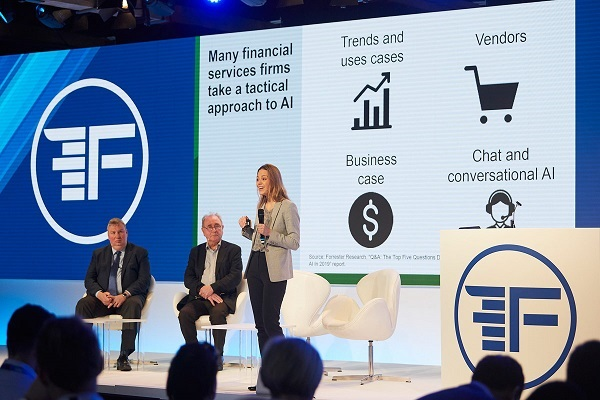Consider this scenario. You are planning to holiday at the Dead Sea. You search the internet for information on flights and hotels around the area, sift through travel blogs and watch countless YouTube videos, posted by the more enterprising holidaymakers. You then get on Facebook. As you scroll down your timeline, you see adverts from tour operators and travel portals listing offers and discounts on flights and hotels around the Dead Sea. A virtualhelping hand reaches out of nowhere to help you economise your travel budget.
Consider another scenario. You are looking to buy a smartphone. To get a better idea about prices and features, you do your research on e-commerce websites. You get on social media and ask your friends for suggestions on the best phone to buy based on your budget. You then get text messages from a couple of banks you transact with, offering discounts, or cash-back offers by using that particular bank’s credit card.
In the first scenario, a non-banking company like Facebook has used big data to track consumer habits. The second is of banks that have woken up to the practice of using big data to deliver personalised services to their customers. Banks really need to step up this practise, to keep pace with their non-banking competitors.
The wealth of big data in every bank
Banks have access to a wealth of big data, and industry experts often say that banks cannot expect to stay ahead of the race by merely going digital. Banks need to deliver personalised choices not just at the moment of financial transactions but before and afterwards as well. Banks should virtually enter into the commercial lives of their customers.
Data can be extracted from several sources. Non-traditional sources include social media conversations, minutes of meetings, company reports etc. In the digital world, banks have the distinct advantage of having a large customer base, which gives them access to vast customer and transaction data. However, what should bother them is that tech giants like Google, PayPal and Apple have been eating into their revenues, and Accenture estimates that competition from non-banks could erode one-third of traditional bank revenues by 2020.
Apart from merely encouraging its customers to save, banks can invest in digital tools to help customers make decisions on what to buy, where to eat or where to watch a movie. Some banks have been proactive on this front. For example, The Commonwealth Bank of Australia has an app that uses ‘augmented reality’ technology to help home buyers. A buyer just needs to point his smartphone camera at a house to get access to extensive property detail, alongside monthly payment estimates on mortgages and insurance. Garanti, one of Turkey’s leading banks, uses GPS and the app Foursquare to inform a customer of a good offer, if s/he is close to a store.It also estimates how much will be left in the account based on past spending.
In India, Axis Bank uses data analytics to research background information on a potential customer and the likelihood of him/her taking a loan, before pitching to them.
In the sphere of wealth management, firms have been using Predictive Analytics to process vast amounts of structured and unstructured data. Predictive analytics is a tool used to better understand market trends and client behaviour. Once the data is fed into the system, a financial planner can predict a big change in his/her client’s circumstances, such as marriage, retirement or a potential layoff during an economic downturn.
Wealth management firms are competing with banks to help customers manage their finances better. While the concept of the fixed deposit has always been a fail-safe option for making one’s money grow, perhaps investing a big chunk in a mutual fund would ensure better returns. If a customer has a cash windfall after selling his/her car, a wealth manager can advice how best to reinvest this money, rather than let it sit in a savings account. These firms have been using data analytics to better understand the emotional behaviour of their customers too.
Technology that analyses social media activity of clients, offer big clues to what they are planning. A practice that would go a long way in retaining customer loyalty is to have regular meetings and periodic financial reviews, especially when there is abnormal activity in the account.
“All this data on a client is well and good but its real value is when it leaves the adviser’s head and is input into a bank’s CRM platform,” Kendra Thompson, head of Accenture’s wealth and asset management practice in North America was quoted on Euromoney.com. “If thousands of advisers are now starting to input more details about their clients, alongside what investment solutions they are providing, then before long you can drill down for e.g.to making the connection between dentists who live in rural areas and enjoy cycling have been interested in investing in X.”
Understanding a customer’s needs has never been part of a bank’s business model. Investing in the right technology to put the troves of big data to better use is a way for banks to evolve, quickly. Ultra-personalisation cannot be achieved by a bank with the use of internal data alone. The growing pool of external data needs to be tapped into,and combined with internal data.
As Vik Atal, former Executive Vice President, Citigroup, said in an interview to Big Data Made Simple: “For them [banks], using data analytics for better customer satisfaction and deeper engagement is like developing a muscle that’s never been completely used. It requires intense focus, discipline, and persistence.”
It’s time for banks to work the engagement muscle and to focus on getting up close and personal with their customers.
This article originally appeared here. Republished with permission from the author. Submit your copyright complaints here.






















